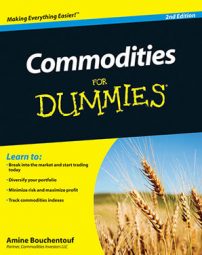Understanding commodity options can be challenging because they’re, in fact, derivatives used to trade other derivatives (futures contracts). So here’s an example that applies the concept of options to a real-world situation.
You walk into a car dealership and see the car of your dreams. Unfortunately, it costs $100,000, and you can’t spend that amount of money on a car right now.
However, you’re due for a large bonus at work, and you’ll be able to pay for it in two weeks. So you approach the car dealer and ask him to hold the car for you for two weeks, at which point you can make full payment on it.
The dealer agrees but insists that he will have to charge you $5,000 for the option to buy the car in two weeks for the set price of $100,000. You agree to the terms and give him a nonrefundable deposit of $5,000 (known as the premium), which gives you the right, but not the obligation, to come back in two weeks and purchase the car of your dreams.
The dealer, on the other hand, is obligated to sell you the car if you choose to exercise your option to do so. In this situation, you’re the holder of the option and the dealer is its underwriter.
Consider two different scenarios that unfold during the two-week period. The first one is that, a few days after you purchase the option to buy the vehicle, the car manufacturer announces that it will stop making vehicles of this kind — the car is now a limited edition and becomes a collector’s car. Congratulations! The value of the car has now doubled overnight!
Because you and the dealer entered into an options agreement, the dealer is obligated to sell you the car at $100,000 even though the car now costs $200,000 — if you choose to exercise your rights as the option holder. You come back to see the dealer, and you buy the car at the agreed-upon price of $100,000.
You can now either drive your new car or sell it at current market price for a cool $95,000 profit ($200,000 – $100,000 – $5,000 = $95,000)!
Or a few days after you sign the options agreement, the car manufacturer announces that there’s a defect with the car’s CD player. The car works fine, so the manufacturer doesn’t need to recall it, but the built-in CD player is defective and not usable. Because of this development, the value of the car drops to $80,000 (drivers like listening to their CDs, after all).
As the holder of the option, you aren’t obligated to purchase the car. Remember, you have the right — but not the obligation — to follow through on the contractual agreements of the contract. If you choose not to purchase the car, you will have incurred the $5,000 loss of the premium you paid for the option.
In a nutshell, that example is what trading options is all about. You can now apply this concept to profit in the capital markets in general and the commodities market in particular.
For example, if you expect the price of the June copper futures contract on the CME to increase, you can buy an option on the CME that gives you the right to purchase the June copper futures contract for a specific price. You pay a premium for this option and, if you don’t exercise your option before the expiration date, the only thing you lose is the premium.

